Kristine Heiney
Optimization of a Hydrodynamic Computational Reservoir through Evolution
Apr 20, 2023
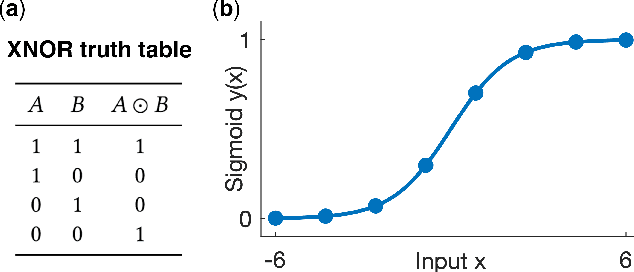


Abstract:As demand for computational resources reaches unprecedented levels, research is expanding into the use of complex material substrates for computing. In this study, we interface with a model of a hydrodynamic system, under development by a startup, as a computational reservoir and optimize its properties using an evolution in materio approach. Input data are encoded as waves applied to our shallow water reservoir, and the readout wave height is obtained at a fixed detection point. We optimized the readout times and how inputs are mapped to the wave amplitude or frequency using an evolutionary search algorithm, with the objective of maximizing the system's ability to linearly separate observations in the training data by maximizing the readout matrix determinant. Applying evolutionary methods to this reservoir system substantially improved separability on an XNOR task, in comparison to implementations with hand-selected parameters. We also applied our approach to a regression task and show that our approach improves out-of-sample accuracy. Results from this study will inform how we interface with the physical reservoir in future work, and we will use these methods to continue to optimize other aspects of the physical implementation of this system as a computational reservoir.
Local learning through propagation delays in spiking neural networks
Oct 27, 2022Abstract:We propose a novel local learning rule for spiking neural networks in which spike propagation times undergo activity-dependent plasticity. Our plasticity rule aligns pre-synaptic spike times to produce a stronger and more rapid response. Inputs are encoded by latency coding and outputs decoded by matching similar patterns of output spiking activity. We demonstrate the use of this method in a three-layer feedfoward network with inputs from a database of handwritten digits. Networks consistently improve their classification accuracy after training, and training with this method also allowed networks to generalize to an input class unseen during training. Our proposed method takes advantage of the ability of spiking neurons to support many different time-locked sequences of spikes, each of which can be activated by different input activations. The proof-of-concept shown here demonstrates the great potential for local delay learning to expand the memory capacity and generalizability of spiking neural networks.
Evolving spiking neuron cellular automata and networks to emulate in vitro neuronal activity
Oct 15, 2021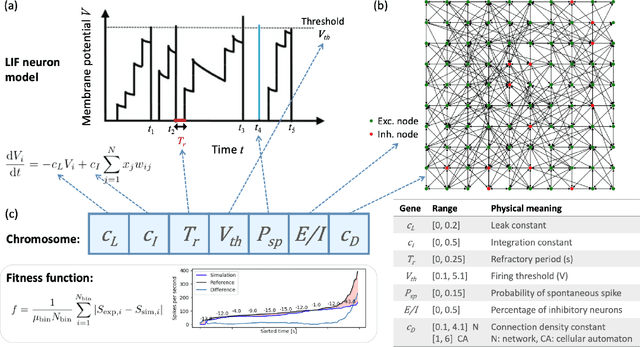
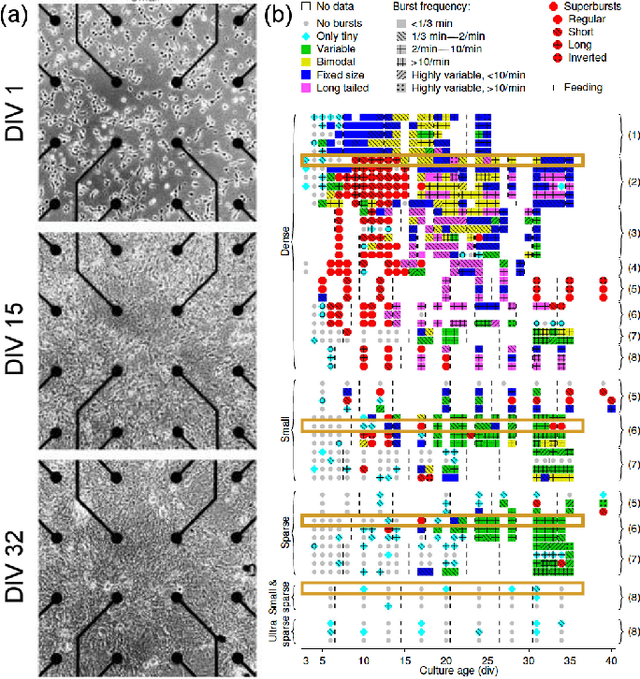
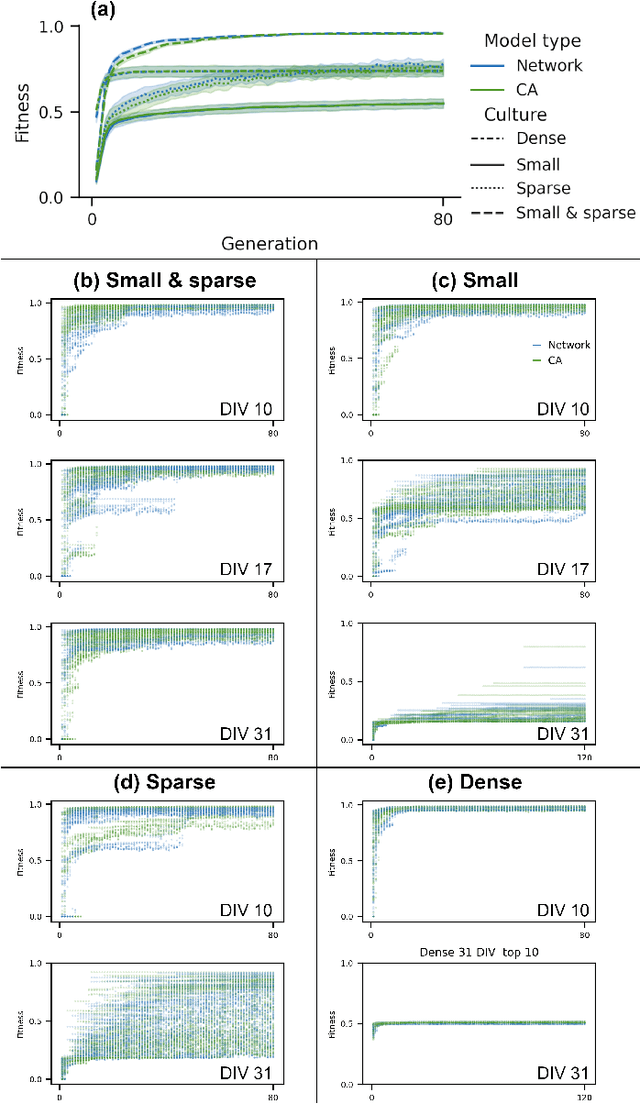
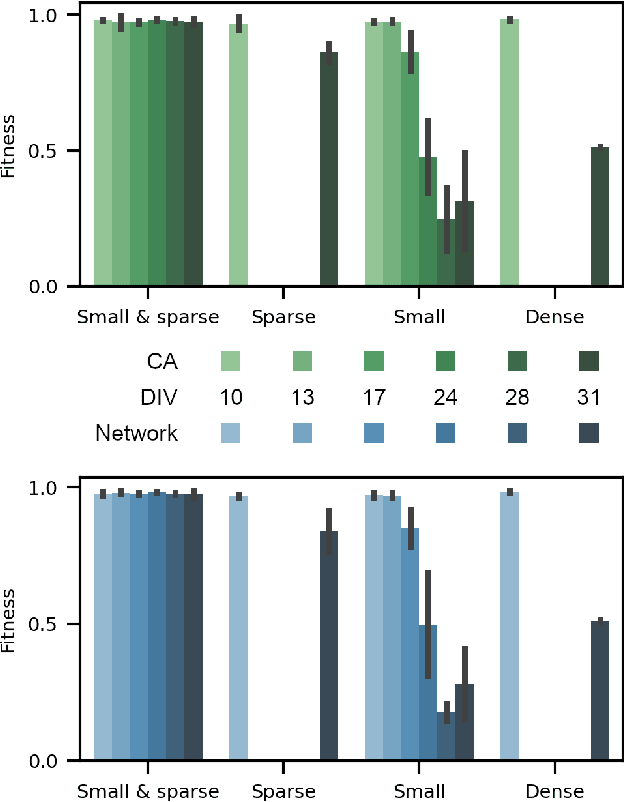
Abstract:Neuro-inspired models and systems have great potential for applications in unconventional computing. Often, the mechanisms of biological neurons are modeled or mimicked in simulated or physical systems in an attempt to harness some of the computational power of the brain. However, the biological mechanisms at play in neural systems are complicated and challenging to capture and engineer; thus, it can be simpler to turn to a data-driven approach to transfer features of neural behavior to artificial substrates. In the present study, we used an evolutionary algorithm (EA) to produce spiking neural systems that emulate the patterns of behavior of biological neurons in vitro. The aim of this approach was to develop a method of producing models capable of exhibiting complex behavior that may be suitable for use as computational substrates. Our models were able to produce a level of network-wide synchrony and showed a range of behaviors depending on the target data used for their evolution, which was from a range of neuronal culture densities and maturities. The genomes of the top-performing models indicate the excitability and density of connections in the model play an important role in determining the complexity of the produced activity.
On Artificial Life and Emergent Computation in Physical Substrates
Sep 09, 2020



Abstract:In living systems, we often see the emergence of the ingredients necessary for computation -- the capacity for information transmission, storage, and modification -- begging the question of how we may exploit or imitate such biological systems in unconventional computing applications. What can we gain from artificial life in the advancement of computing technology? Artificial life provides us with powerful tools for understanding the dynamic behavior of biological systems and capturing this behavior in manmade substrates. With this approach, we can move towards a new computing paradigm concerned with harnessing emergent computation in physical substrates not governed by the constraints of Moore's law and ultimately realize massively parallel and distributed computing technology. In this paper, we argue that the lens of artificial life offers valuable perspectives for the advancement of high-performance computing technology. We first present a brief foundational background on artificial life and some relevant tools that may be applicable to unconventional computing. Two specific substrates are then discussed in detail: biological neurons and ensembles of nanomagnets. These substrates are the focus of the authors' ongoing work, and they are illustrative of the two sides of the approach outlined here -- the close study of living systems and the construction of artificial systems to produce life-like behaviors. We conclude with a philosophical discussion on what we can learn from approaching computation with the curiosity inherent to the study of artificial life. The main contribution of this paper is to present the great potential of using artificial life methodologies to uncover and harness the inherent computational power of physical substrates toward applications in unconventional high-performance computing.
 Add to Chrome
Add to Chrome Add to Firefox
Add to Firefox Add to Edge
Add to Edge